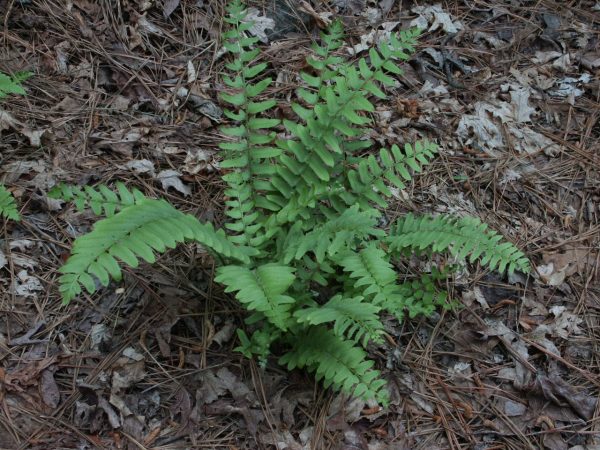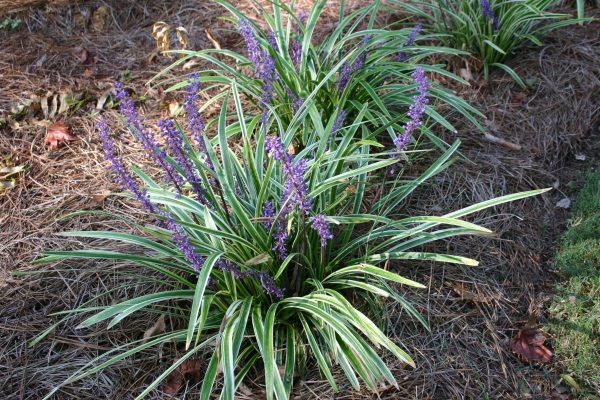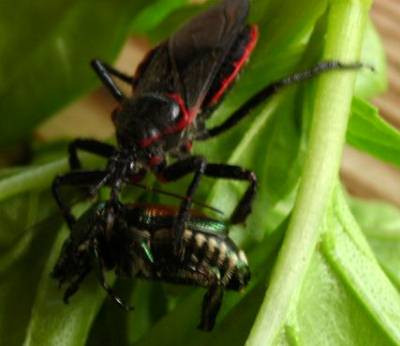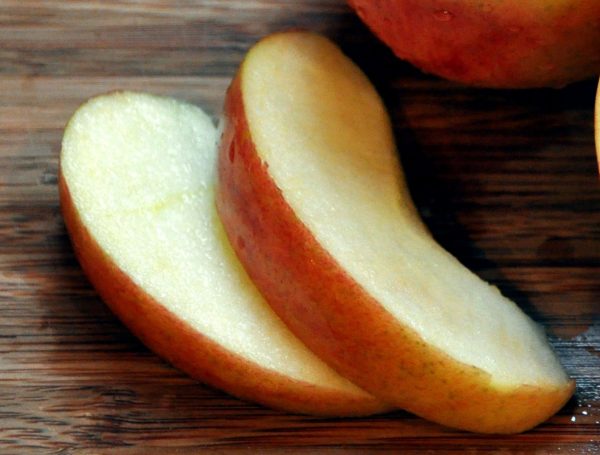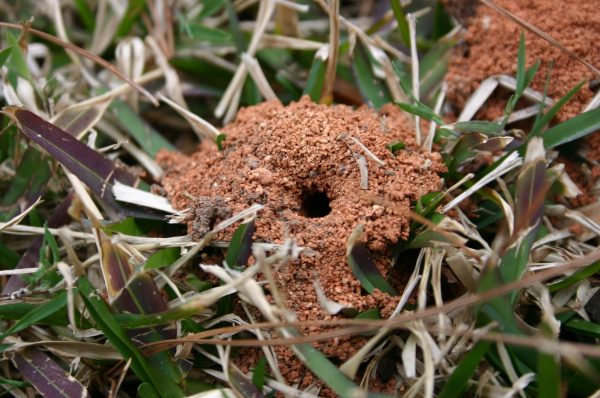Lawn – Weed Control Basics

BASIC INFORMATION:
THREE METHODS
There are three primary methods of controlling weeds. Any one method, when used alone, will not usually control all of your weeds. To consistently control weeds you must use a combination of all three practices. The references above give specific information on lawn grasses and lawn weeds to help you devise a line of attack.
HEALTHY LAWN
The first line of defense against weeds is to follow good growing practices that promote vigorous growth and development of the turfgrass or other plants. Weeds do not easily invade lawns that are properly fertilized, watered and mowed at the correct height and frequency. Weeds usually appear first in bare or thin areas of the turfgrass.
MECHANICAL
If your grass can’t oust the invaders, you can lend a little mechanical help. Many weed species do not tolerate frequent mowing. Adhere to the mowing frequency and cutting height guidelines developed by experts to limit the development of weeds. Hand pulling annual weeds is effective, enjoyable and good exercise to boot. However, it is too time consuming and not very effective in controlling most perennial weeds. Hand pulling a strange or a new weed when it first appears in the lawn will help to prevent the spread of that weed later this year.
CHEMICAL
Herbicides are chemicals that are used to control the growth and development of a weed. Before a herbicide is labeled for use in a home lawn it is thoroughly investigated by chemical companies, university researchers and various federal agencies. Herbicides must be proven safe to humans, the environment and the turfgrass and must be effective in destroying the weeds. Herbicides are important if not irreplaceable components of a lawn weed control program. Weed killers are applied at specific times of the year and will control only certain weed species. Also, many herbicides cannot be used on every kind of turfgrass. The product label is the best reference for safe and effective use of any weed killer. Always read the label prior to using a turfgrass herbicide.
For a specific plan of how to control weeds in your lawn you need to note three things. You need to know what type of turfgrass you have. You need to know what type of weed you have and then you need to know what your control options are in your environment.
BROADLEAF WEEDS
In general, there are two types of weed leaves: broadleaf and grassy. The flourishing chickweed I have in a backyard flower bed is an example of a broadleaf weed. Others include henbit, dandelion, spurge and wild onion. Broadleaf weeds are easy to distinguish in a lawn. After all, they’re not a grass so they must be a weed! Broadleaf weeds react differently than grassy plants to herbicides. That’s an important point to remember as you make your scheme.
GRASSY WEEDS
The thin emerald leaves of annual bluegrass show in patches in my lawn. Contrasting with the brown St. Augustine, they are easy to spot. In summer, my neighbor notices the coarse grassy appearance of crabgrass, dallisgrass and bahiagrass in his fescue. Grassy weeds aren’t as noticeable as broadleaf weeds but if you walk your lawn regularly you’ll come to recognize what you want and what you don’t want there.
Weed control in lawns occurs in two ways: by preventing the weed seed from germinating each year and by killing weeds that already exist.
Products known as pre-emergent weed killers are used to prevent weed seed from germinating. There are several different chemicals and products available. They differ in the kinds of weed seed they control and the length of time the product remains active.
Pre-emergents should be applied before the weed seed germinate. For summer weeds, Like crabgrass, apply the chemical in spring after night temperatures have been in the 60’s for four days around the time forsythias bloom. For winter weeds, like annual bluegrass, apply the preemergent in September or early October. Products must be watered into the soil after application.
Other weed killers are used after the weeds have emerged. There are different products for grassy weeds, like goose grass and broad-leafed weeds, like dandelions. Onions are considered a broad leafed weed. These post emergent chemicals are used when the weeds are actively growing, early in the summer.
It is important to know the name of the weed you are trying to control before using any weed control chemical. Once you know the weed, it is simple to read the label of a weed control product to see if it works on your weed. Also be sure to check and see if the chemical can be applied to your lawn grass without harming it. Never apply more of the chemical than the label recommends. Double doses of herbicide can kill your entire lawn before you know it.
Moss does not kill or crowd out grass. Moss grows in places where grass can not grow because it is too shady or wet. The best way to control moss is to change the environment so the soil dries faster. This can be done by scraping up the moss, digging the soil and planting grass again. Lime and other moss control chemicals will kill moss for a short time but they are only band-aid solutions. If the soil is dry and conditions are good for grass, moss will not return.
WEED ‘N’ FEED PRODUCTS
Many times, use of some “Weed ‘N’ Feed” products results in applying one of the ingredients at the wrong time. Bermudagrass, zoysiagrass and centipedegrass lawns should be fertilized during or after green-up. Weed preventers should be applied to these lawns before they green-up. Post-emergent weed killers can be applied to bermudagrass, zoysiagrass and centipedegrass lawns once or twice in summer but feeding them may not be necessary at the same time. On fescue, a granular “Weed ‘N’ Feed” having a broad-leaf weed killer could be used in fall – but make sure the lawn is damp so the weed killer clings to the weed leaves. Read the label before applying any product.
LABELS ARE NOT JUST FOR DECORATION
The label on any lawn product is there to give you valuable information on how the fertilizer or herbicide or grass seed should be used. Before you purchase any product, read the label to make sure the product does what you want and can be used on your lawn grass. Don’t believe that “If one tablespoon is good, two tablespoons is better!”. Putting down too much herbicide can severely damage even the toughest lawn grass!
ANNUAL BLUEGRASS (Poa annua): The annual nature of this weed supplies its most noxious habit: It re-seeds prolifically. Annual bluegrass is outwardly attractive in the winter, but just wait until April. The thick mat of bluegrass will choke out the better turf underneath. Every blade (of which there are thousands) seems to be covered with seeds in May. These seed are carried by animals, water and lawnmowers to other parts of the lawn. When hot weather comes, the bluegrass dies, leaving a large bare spot and a legacy of thousands of seeds for next fall. The best control for a heavy infestation of annual bluegrass is to apply a pre-emergent weed chemical in mid-September and again in early November. The pre-emergent will prevent seeds from germinating. If bluegrass is present in spring, the best control is to kill it with a non-selective herbicide (RoundUp, Roots & All, Finale) before it forms seed. Don’t try to drench the soil; just a mist of spray on the foliage is enough.
Another way to control annual bluegrass in lawns is to wrap an old cotton towel around the end of a garden rake. Tie in place with string and dampen the towel with Roundup. Use the tool to “paint” weedkiller onto green weed foliage while avoiding the turfgrass. Discard the cloth when the job is finished by wrapping in plastic bags and putting it out for your municipal garbage collection.
CHICKWEED: Chickweed is another winter annual weed. It can be controlled with a pre-emergent such as isoxaben (click for sources). In addition, chickweed can be killed with herbicides that selectively kill broadleaf plants in lawns. In particular, herbicides with the active ingredients 2,4-D and MCPP work well on chickweed. These chemicals can be used on grass that is not dormant, including fescue. Do not use on a fall-seeded fescue lawn until it has been mowed four times.
WILD ONIONS: Scientifically, the plant is a wild garlic, but the visual effect is the same. Clumps of green wild onions can ruin the appearance of a soft, brown Bermuda lawn. Onions reproduce by seeds as well as via the bulblets underground. Because dormant bulblets can sprout in future months, control will take two sprays in spring, at six-week intervals, with either glyphosate (click for sources) or a herbicide labeled for broadleaf weeds (click for sources)
. Follow with two sprays in fall, beginning when the onion foliage emerges. The chemical imazaquin (Image) can also be used for wild onion control. DO NOT apply when turfgrass is emerging from winter dormancy. DO NOT apply to newly planted or sprigged turfgrasses.

henbit
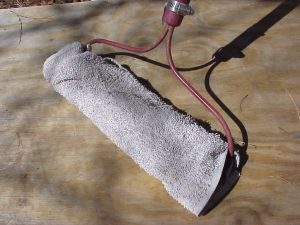
rake applicator



